Puppies, with their boundless energy and irrepressible joy, are universally adored. These little balls of fur not only bring happiness into our lives but also carry with them a multitude of fascinating traits and behaviors that are a wonder to discover.
If you love puppies as much as I do or plan to bring one into your home, these 50 facts about puppies will offer you a deeper insight into their delightful world.
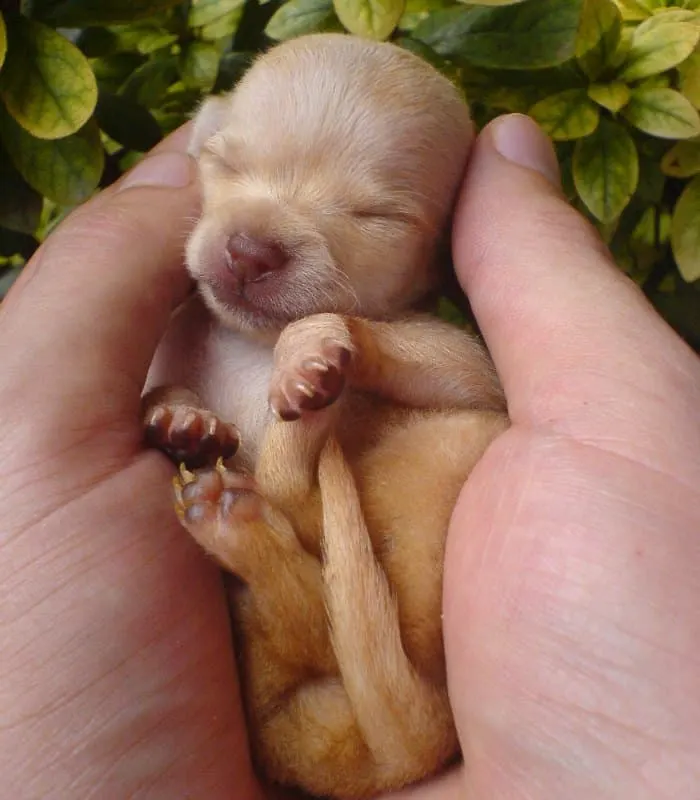
1. Puppies are born blind, deaf, and toothless.
At birth, puppies are quite vulnerable; they cannot see or hear, and they lack teeth. Their eyes and ear canals are sealed shut, only beginning to open after about two weeks, marking their first steps into a sensory world.
2. Puppies are born with their eyes closed.
This serves as a protection mechanism while the eyes develop. Once they open, puppies will have blurry vision for some time before it fully sharpens.
3. Puppies are born with their ears closed.
Similarly, their ear canals remain closed to protect against infections and gradually open to let in the sounds of their environment.
4. Puppies are born with a sense of smell.
Though they can’t see or hear, puppies are born with a strong sense of smell, which guides them to their mother and her milk.
5. Puppies are born without a full set of teeth.
Puppy teeth, also known as milk teeth, start to emerge at around three to four weeks of age.
6. Puppies’ first set of teeth.
Their first set of teeth (puppy teeth or milk teeth) are 28 in total. They will have 42 adult teeth when they come in.
7. When puppies will lose their baby teeth.
Puppies will start to lose their baby teeth around 3-4 months old and will have lost them all by 6 months old.
8. Puppies and mirrors.
Puppies do not recognize themselves in a mirror. They think it’s another dog.
9. Puppies and baby talk.
Studies show that puppies actually enjoy baby talk.
10. Poop and newborn puppies.
Newborn puppies need their mom to help them to poop. After birth, the mother licks that area to stimulate them to poop.
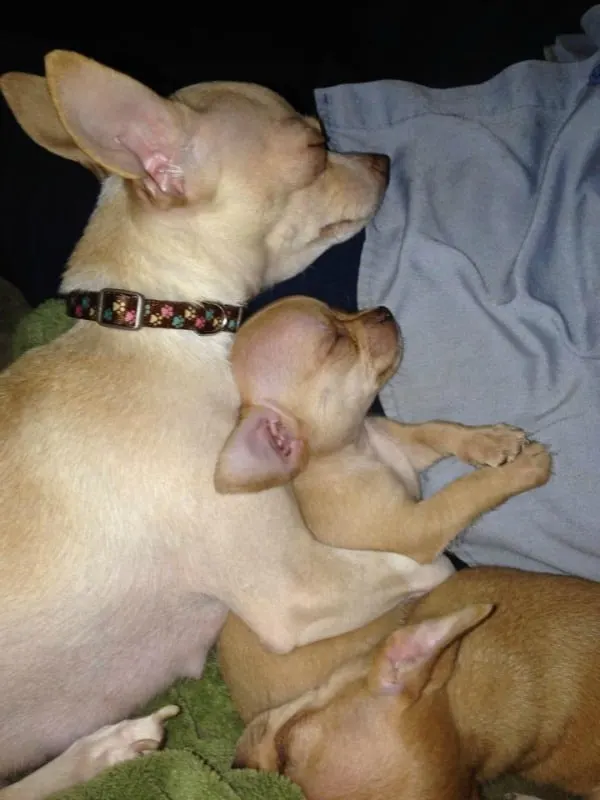
11. Puppies are born with an instinct to follow their mother.
Once they begin to see and hear, puppies will follow their mother, learning from her behavior and cues.
12. Puppies are born with an instinct to play.
Play is an essential part of a puppy’s development, helping them learn social cues and physical skills.
13. Puppies are born with an instinct to explore.
Their inquisitiveness is key to their development, as it encourages them to learn about their environment.
14. Puppies after eating.
Puppies need to potty about 15 minutes after they eat. This is important to know when housetraining.
15. Puppies are born with an instinct to communicate.
From whines and barks to body language, puppies start communicating from a very young age.
16. Heat regulation.
Puppies are less capable of regulating their body temperature than adult dogs. This makes them more susceptible to temperature changes.
17. Puppies are born with an instinct to dream.
Even puppies experience REM sleep, which is when dreaming occurs.
18. Yawning.
Puppies can “catch” yawns from humans and other dogs. It’s supposedly a sign of empathy and bonding.
19. Training commands.
Puppies can start learning simple commands such as “sit” and “stay” as early as 8 weeks old.
20. Biological changes.
When puppies play and interact, their bodies release hormones that help with their growth, their immune system development and learning social cues.
21. Moleras
All puppies are bone with a soft spot (or molera) on the top of their heads. It’s what helps them get through the birth canal. The molera will harden as they get older.
Chihuahuas are the one breed where the molera doesn’t always harden. Sometimes it will stay soft throughout their lives. My chihuahua Lucy has a molera that never hardened.
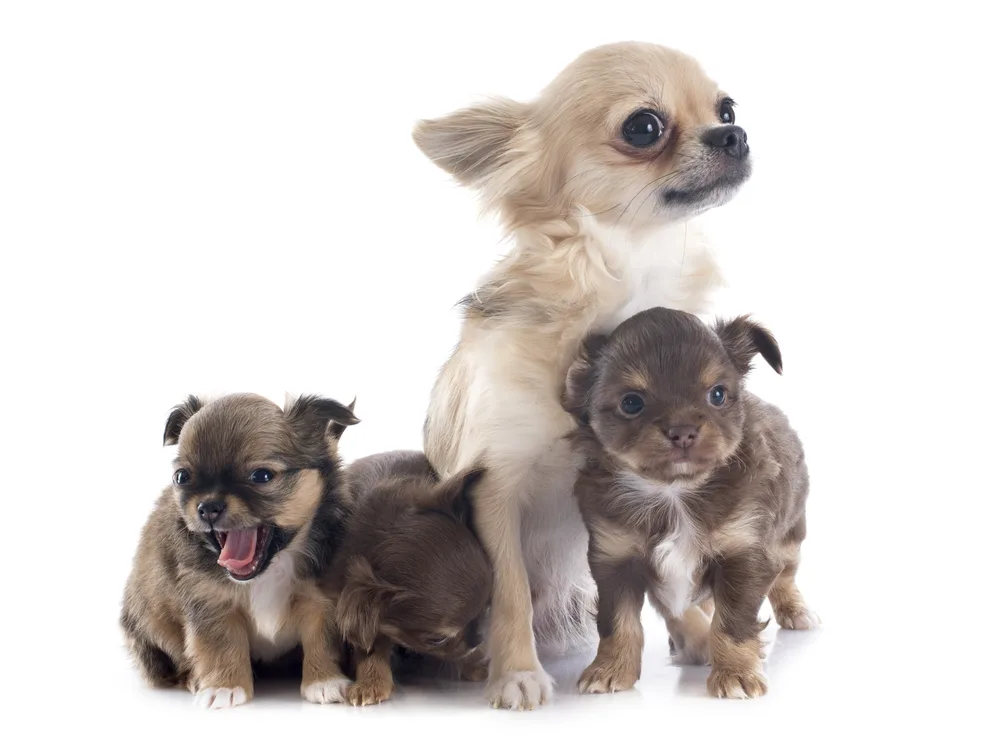
22. When to leave mom.
Puppies need to stay with their mothers for their first 8-12 weeks of life (longer is better). They learn so much from their mother and even their other littermates including obedience and social skills.
23. Vocalizing.
Puppies start to vocalize (mostly whining at first) at around 3 weeks of age and will be able to bark by the time they are 16 weeks old.
24. Blue eyes.
Blue eyes are somewhat rare in adult dogs but all puppies are born with blue eyes. They will change as they get older.
25. Puppies are born with an instinct to be loved.
Puppies seek out affection and bond closely with their caregivers, whether canine or human.
26. Puppies are born with an instinct to love.
In return for the care they receive, puppies give back love unconditionally.
27. Puppies are born with an instinct to trust.
A well-treated puppy will naturally trust its human companions, leading to a strong bond.
28. Puppies are born with an instinct to be loyal.
Loyalty is a trait dogs are known for, and it starts in puppyhood as they attach to their family. Chihuahuas are especially known for their loyalty.
29. Left paw or right paw.
Puppies can show a preference for using their left or right paws, just like humans.
30. Dreaming.
Puppies start dreaming when they are about 2 weeks old.

31. Socialization
The most critical part of puppy socialization is between 3-4 weeks of age. This period of time signically shapes their future temperament.
32. Puppies are born with an instinct to be curious.
Curiosity helps puppies learn about their surroundings and is a key part of their development.
33. Rapid growth.
Puppies grow the fastest during their first 6 months of life. That’s why good nutrition is so important during this time.
34. Puppies are born with an instinct to be playful.
Play is not just fun; it’s a way for puppies to practice survival skills like hunting and fighting.
35. Belly Buttons.
Though less noticeable than human belly buttons, puppies have them too.
36. Different dads.
Puppies can have different fathers in the same litter.
37. Senses.
A puppy’s first senses are touch and smell. Later they will develop their sight and hearing.
38. Identical twins.
Though there may be numerous puppies in a litter, 2 of them may be identical twins.
39. Color.
A puppy’s coat color (and texture too) and nose color may change as they get older.
40. Weight.
Puppies should double their weight after their first week.

41. Coming of age.
The average age of adulthood for dogs is at about a year. It may be up to 2 years for large breed dogs and only 9 months for tiny breeds such as chihuahuas.
42. Largest litter.
The largest littler recorded was 24 puppies born to a Neopolitan Mastiff in 2004.
43. Green fur.
Though rare, a green bile pigment found in a dog’s placenta may cause a puppy to be born with green fur. It fades after a few weeks.
44. Birth rate.
There are more puppies (1.2 million) born every day than humans (360,000).
45. Sleeping.
Puppies spend most of their time sleeping. They can sleep 20 or more hours a day.
46. Gestation.
Momma dogs are pregnant for about 2 months.
47. Baby Schema.
Baby Schema is a theory that happy hormones are released when someone looks at babies (human or animal). It’s nature’s way to ensure that we take of our young.
48. Shakespeare
It is believed that William Shakespeare is the first person to use the word “puppy”. Before the late 16th century, baby dogs were referred to as whelps.
49. Their Nose Prints are Unique.
Just like human fingerprints, every dog’s nose print is unique. This distinct pattern can actually be used to identify them. This is a characteristic that is present from puppyhood.
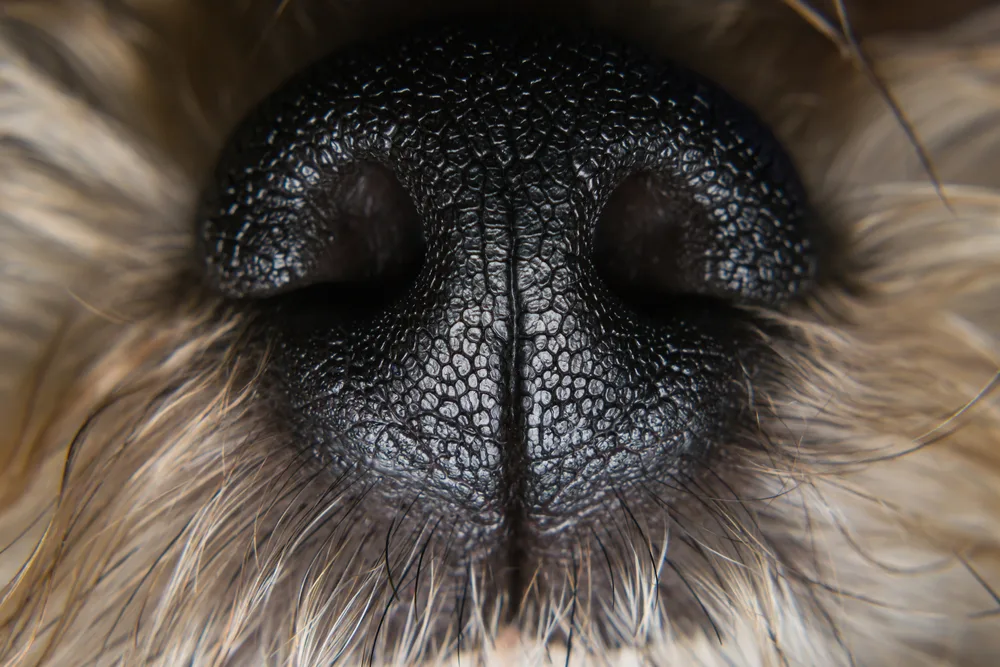
50. Puppies Have a Specific “Puppy Gait”.
Puppies have a distinctive way of moving, often referred to as a “puppy gait.” This awkward, bouncy way of walking is due to their bodies growing unevenly. Their back legs often grow faster than their front legs, leading to a comical and endearing movement style until they grow into their proportions.
51. Puppy ‘Biting’ is a Learning Behavior.
When puppies play with their littermates, they learn an important lesson about bite inhibition. Their siblings will yelp and stop playing if bitten too hard, teaching the puppy to moderate the strength of its bite. This is an important social learning stage that teaches them how to interact safely with other dogs and humans.
52. Distinct Paw Size as a Growth Indicator.
The size of a puppy’s paws can be an indicator of their adult size. Puppies with larger paws are likely to grow into larger adult dogs. This is because their paws grow to a size that will be proportional to their body as an adult.
53. Puppies Experience Rapid Brain Development
A puppy’s brain reaches nearly its full size by the time they’re about six months old. However, they continue to develop neural connections and learn about their environment well into adulthood. This period is crucial for training and socialization, as their brains are incredibly receptive to new experiences and learning.
Final Thoughts about Puppy Facts
Every puppy is a bundle of potential, waiting to unfold into a unique and loving companion.
These 50 facts about puppies showcase the incredible instincts and developmental milestones that shape their early lives. Understanding these aspects can help us provide better care and deeper connections with our fur babies.
Which puppy fact was most interesting to you? Share in the comments!

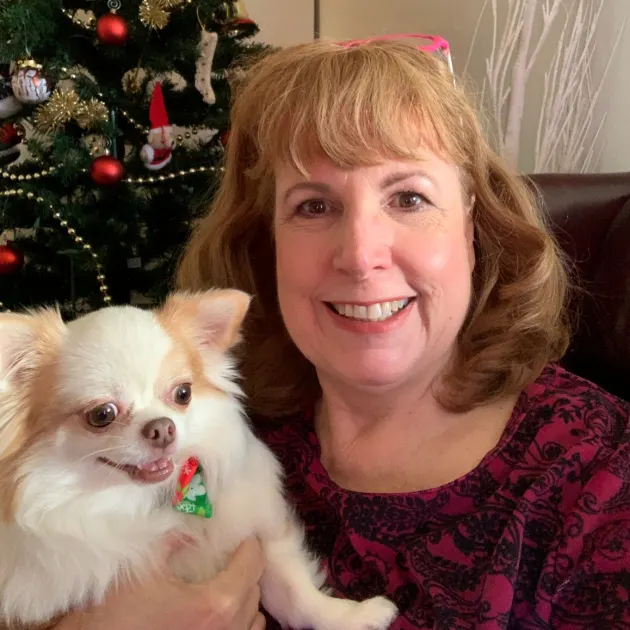
Cathy Bendzunas
Pet Blogger


Betty Peterson
Wednesday 11th of September 2024
Amazing facts about their birth and the role their mothers play in getting them to poop. Never heard of any of this.
Cathy Bendzunas
Thursday 12th of September 2024
It is really interesting. I learned about the getting them to poop when I bred Yorkshire terriers many years ago.
Friday 12th of January 2024
Very interesting, I never knew this about puppies, makes for an interesting conversation for all us chi lovers.
Cathy Bendzunas
Friday 12th of January 2024
Glad you liked it!
Cherry
Sunday 10th of December 2023
Thank you Cathy for this very engaging post. I learned several new things including the fact that one litter could have two different 'dads'! That puppies are born with the instinct to love and be loved, to trust and be loyal, shows why they are naturally our 'best friend' and have a special place in our hearts. Love to all fellow Chi lovers, xXx
Cathy Bendzunas
Sunday 10th of December 2023
I'm glad you liked it Cherry!